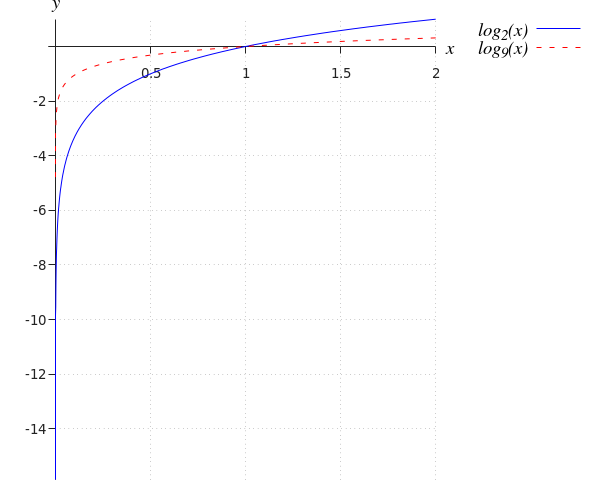Exponential functions and logarithms: Logarithmic functions
 Graph of logarithmic function
Graph of logarithmic function
Previously, we looked at the exponential function and its corresponding graph. We will now study the graph of the logarithmic function. We'll see some interesting commonalities between this graph and the graph of the exponential function.
A function of the form \[f(x)=\log_\blue{a}\left(x\right)\]with #\blue{a}>0#, is called a logarithmic function.
The graph's asymptote is the #y#-axis. The logarithm is not defined for #x=0#, but it is defined for positive numbers very close to zero.
Dependent on the value of #\blue{a}#, the graph is either increasing or decreasing. If #\blue{a}>1#, the graph is increasing. If #0<\blue{a}<1#, the graph is decreasing.
We note that the domain of the logarithmic function is only the positive #x#-axis, and its range is the entire #y#-axis.
The given values of the base numbers are irrelevant: the graph of #\log_a(x)# will always move through the point #\rv{1,0}#, as long as #a# is positive, because #a^0=1#.


Or visit omptest.org if jou are taking an OMPT exam.



